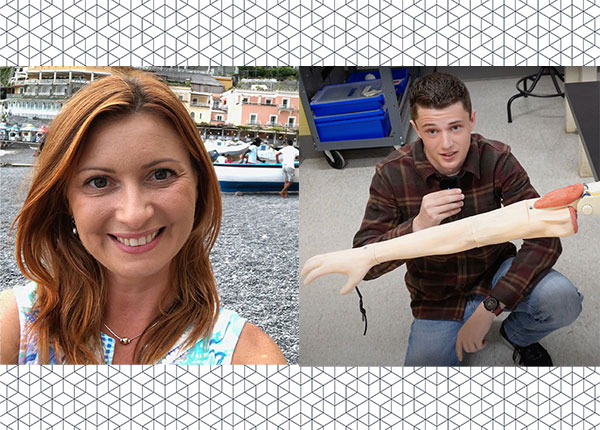
Supported by a grant from the NASA-CT Space Grant Consortium, the research team developed a human-sized, 3D-printed arm model to study deltoid muscle force—a key element in understanding arm mechanics. The team’s investigation focused on three scenarios: measuring deltoid force as a function of lifting force, analyzing the effect of changing the arm’s angle with the vertical axis, and examining the additional challenges imposed by wearing a heavy suit that is like a NASA astronaut’s suit.
The team's findings could have applications in areas as diverse as prosthetic design and space exploration. By simulating the conditions experienced by astronauts wearing heavy suits, the research could offer valuable insights into improving mobility and reducing strain during space missions.
"This research connects physics concepts with the human body in a way that makes it tangible and impactful, says Mohottala. "Our goal was not only to advance understanding but also to create demonstrations that could aid physics education, especially in areas where traditional demonstrations are not readily available."
The project has already made a significant impact on the academic community. In June 2024, Mohottala and biology and pre-medical advising program student Agnieszka (Agnes) Machowski ’25, undergraduate research assistant and prosthetics and orthotics program student Joseph Lothamer M’26, and Assistant Professor of Mathematics Daniel Martin, who provided valuable expertise in making a GeoGebra simulation to compliment the data from the research, presented their initial findings at the International Conference on Education and New Developments in Portugal. Their presentation received recognition from an international audience and resulted in a published conference proceeding. Since then, a second article has been featured in European Journal of Physics Education and the third paper was published in The Physics Teacher magazine.
Hashini Mohottala, Physics Professor, College of Arts and SciencesThis research connects physics concepts with the human body in a way that makes it tangible and impactful. Our goal was not only to advance understanding but also to create demonstrations that could aid physics education, especially in areas where traditional demonstrations are not readily available.
Lothamer says he met Mohottala when he enrolled in her Physics of the Human Body course. “On the very first day, she encouraged students to get involved in research. This moment marked the beginning of a meaningful mentorship and collaboration, during which I co-authored and published three papers with her. I am incredibly grateful for the skills I gained and the experiences I had while working on this project under her guidance.”
“Working with Dr. Mohottala as my advisor has been an incredibly enriching experience,” says Machowski. “She provided invaluable guidance in navigating the complex concepts of physics and the human body while fostering a supportive environment for intellectual growth. Publishing research as an undergraduate under her mentorship was a transformative opportunity.”
Mohottala expressed great pride in her students. “Joey and Agnes have been exceptional throughout this process. Their dedication and hard work have not only led to the success of this project but have also created new opportunities for undergraduate involvement in research. It is truly a joy to see students contributing to meaningful scientific advancements and becoming co-authors on publications.”
Mohottala says the project exemplifies the power of collaboration across disciplines and the transformative potential of undergraduate research. With such innovative endeavors, the Physics Department is making strides in academia and shaping the future of education and applied science.